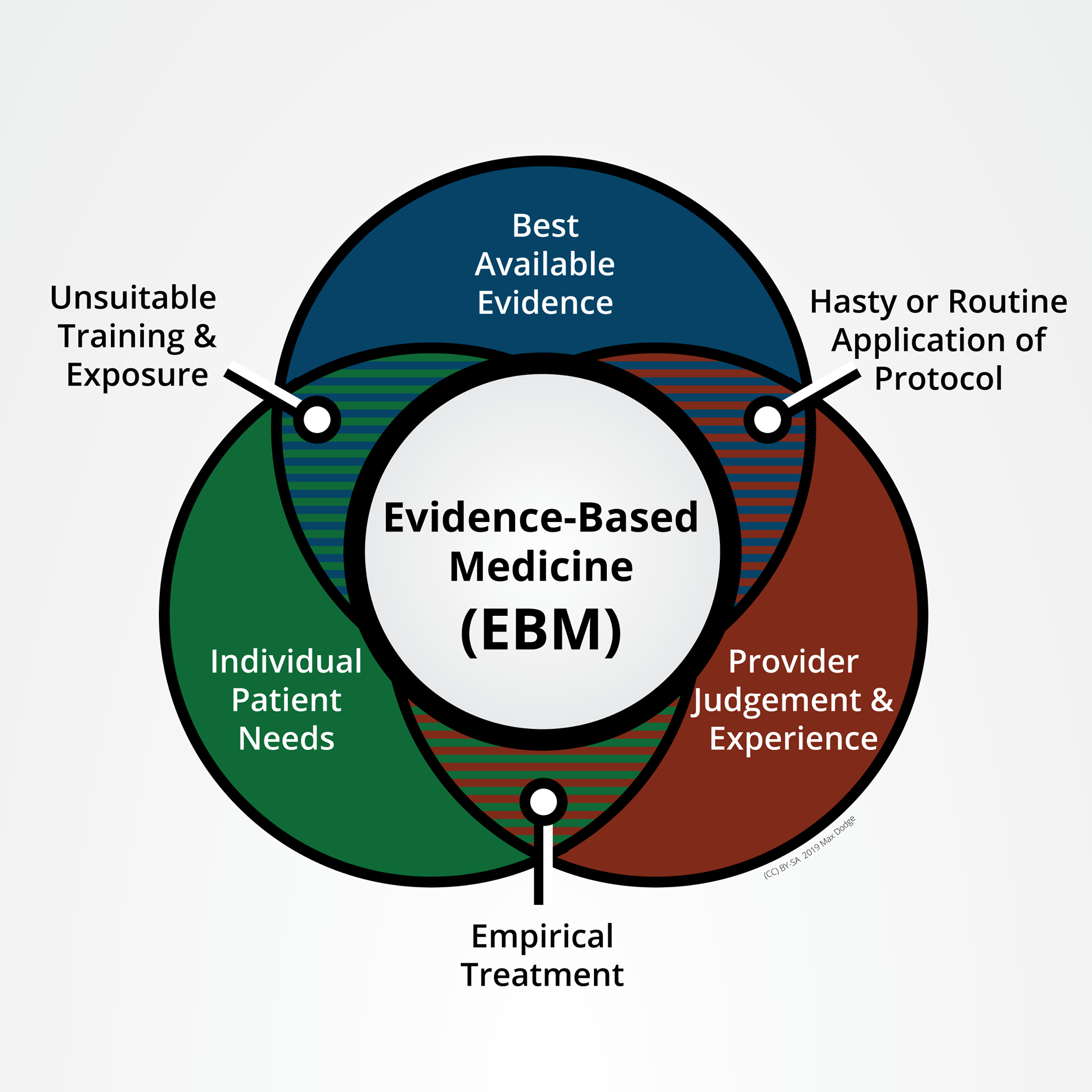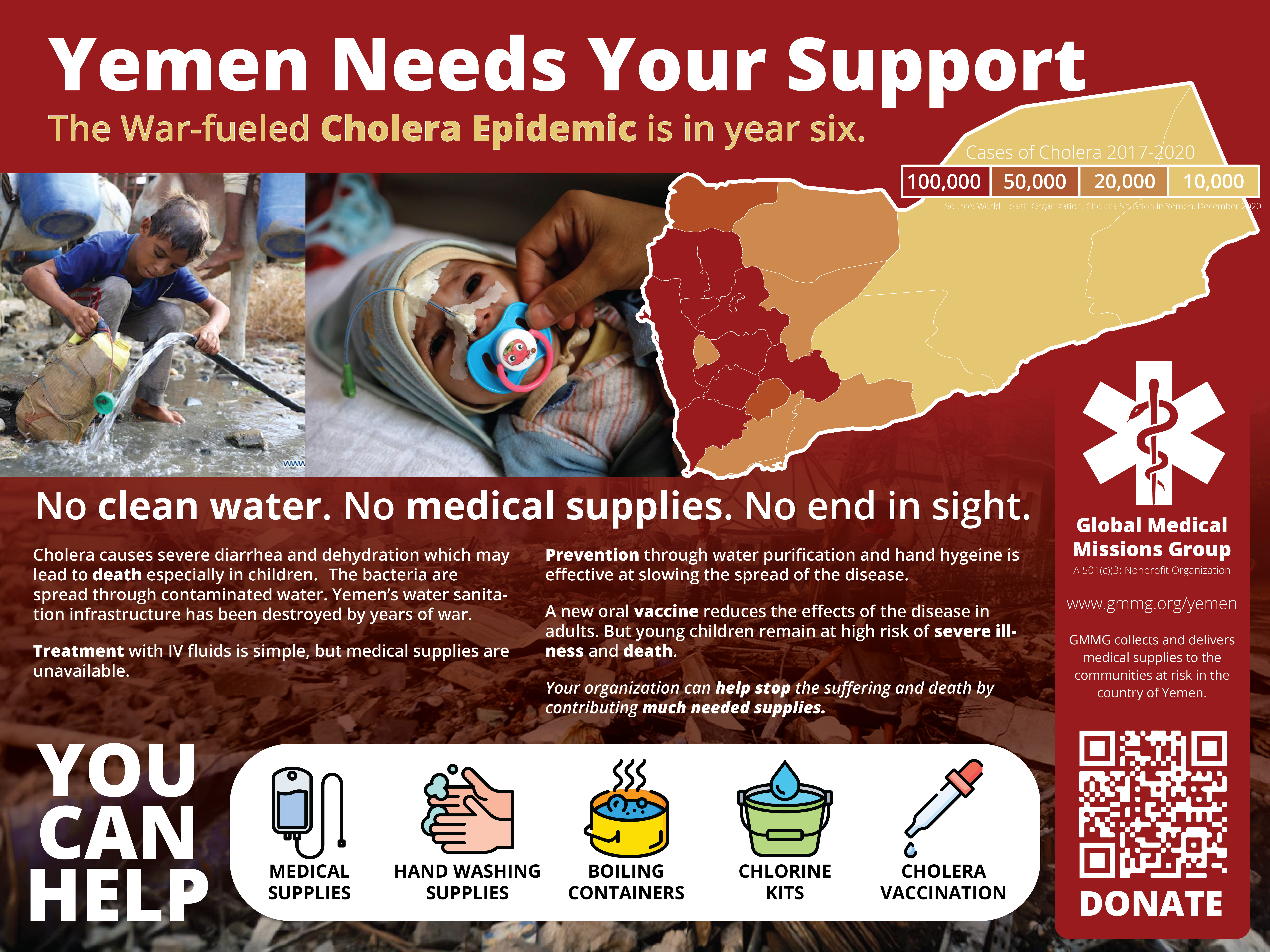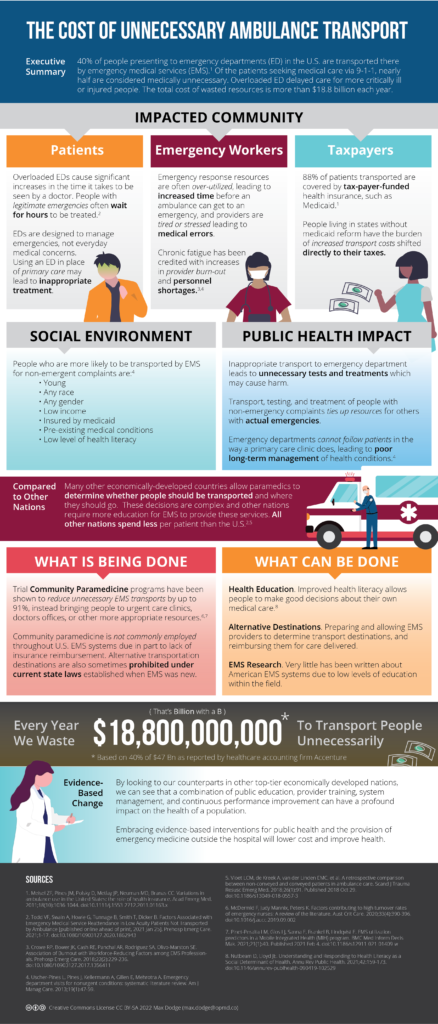
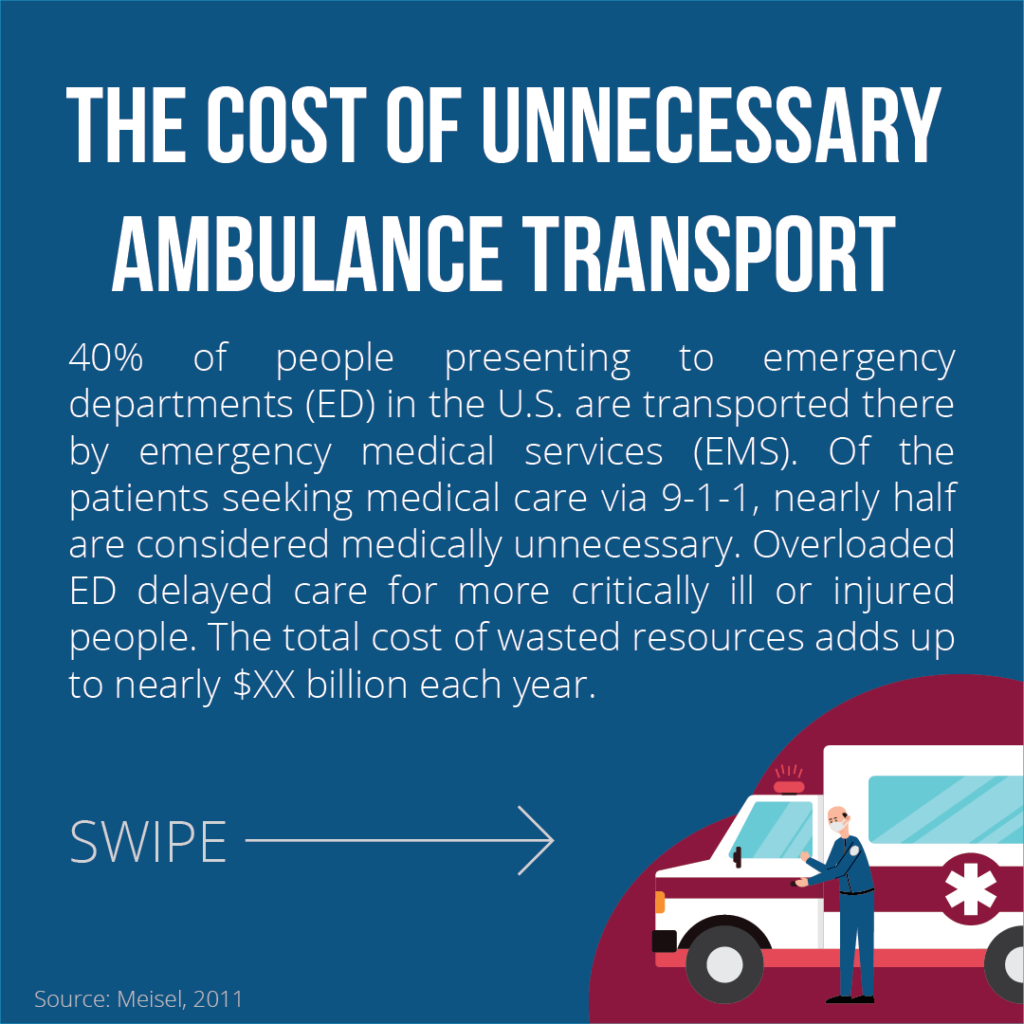
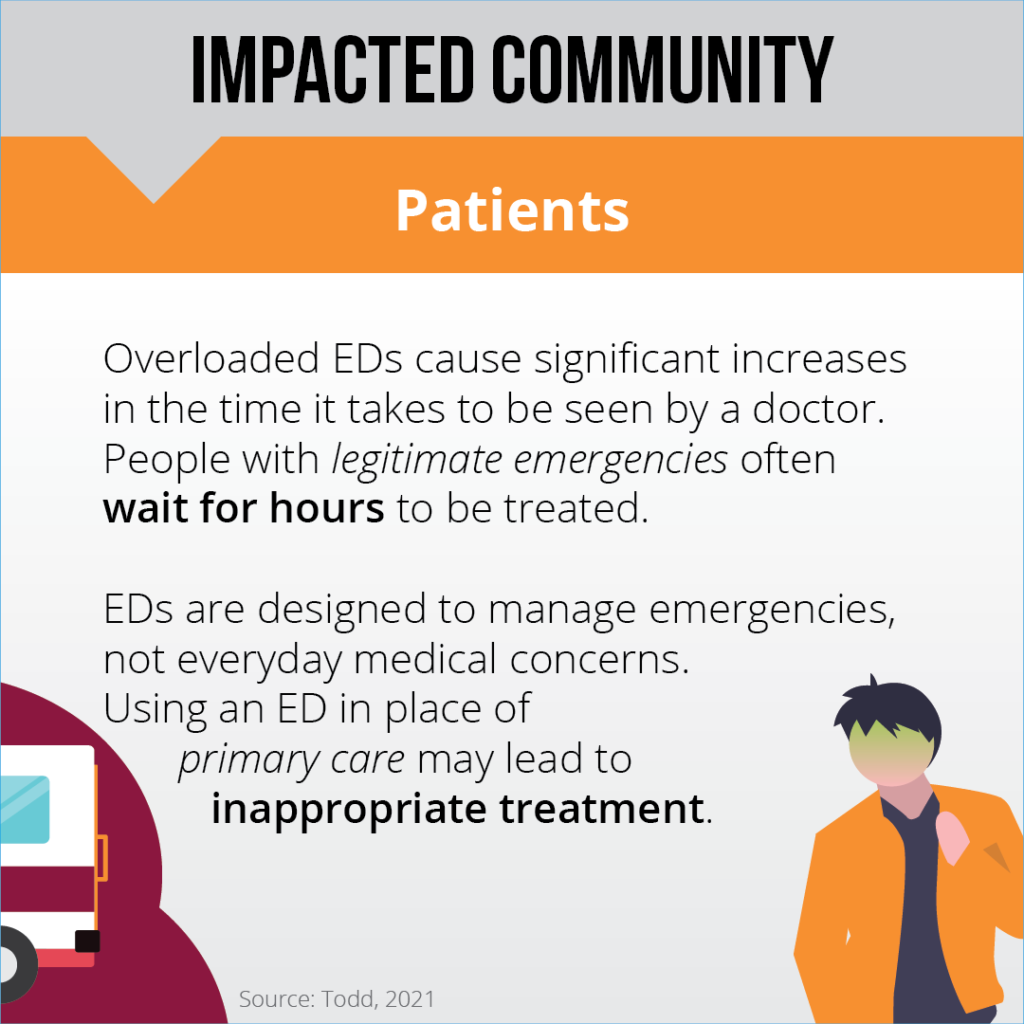
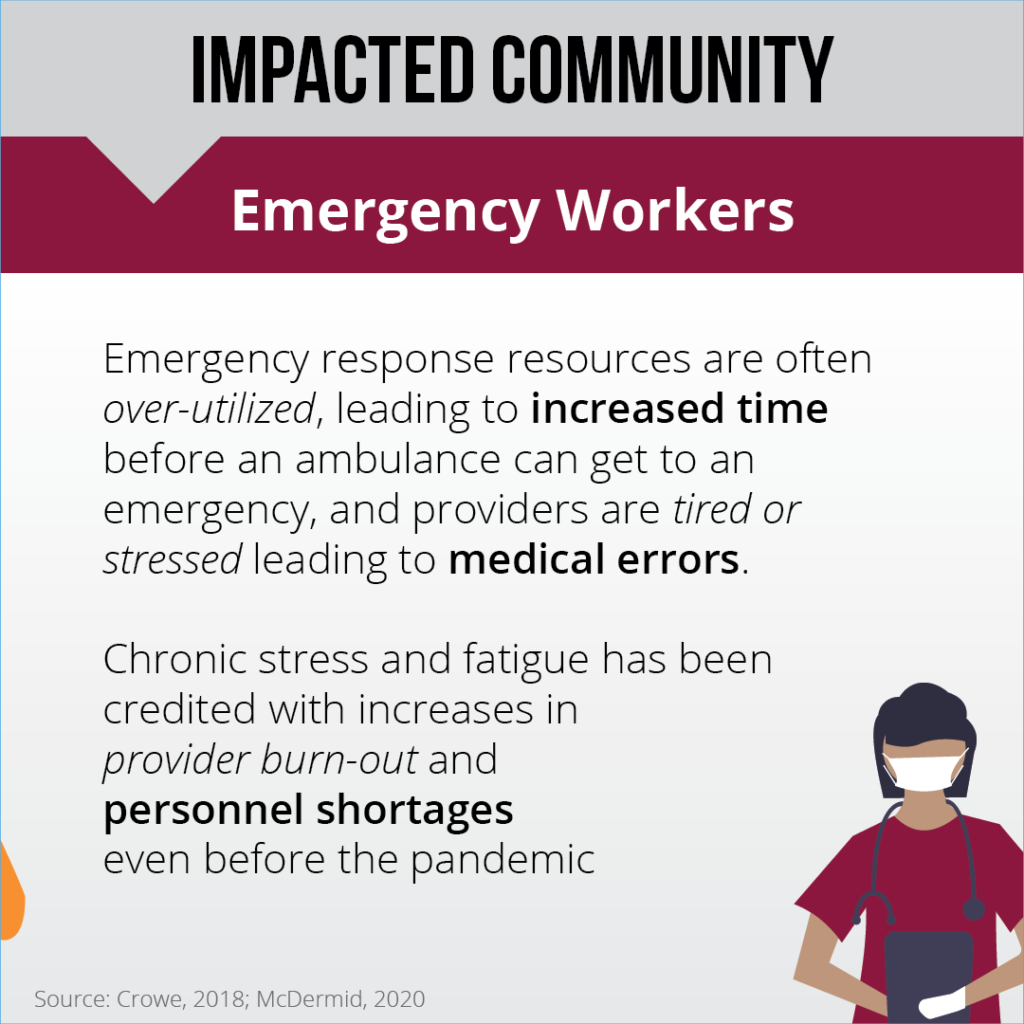
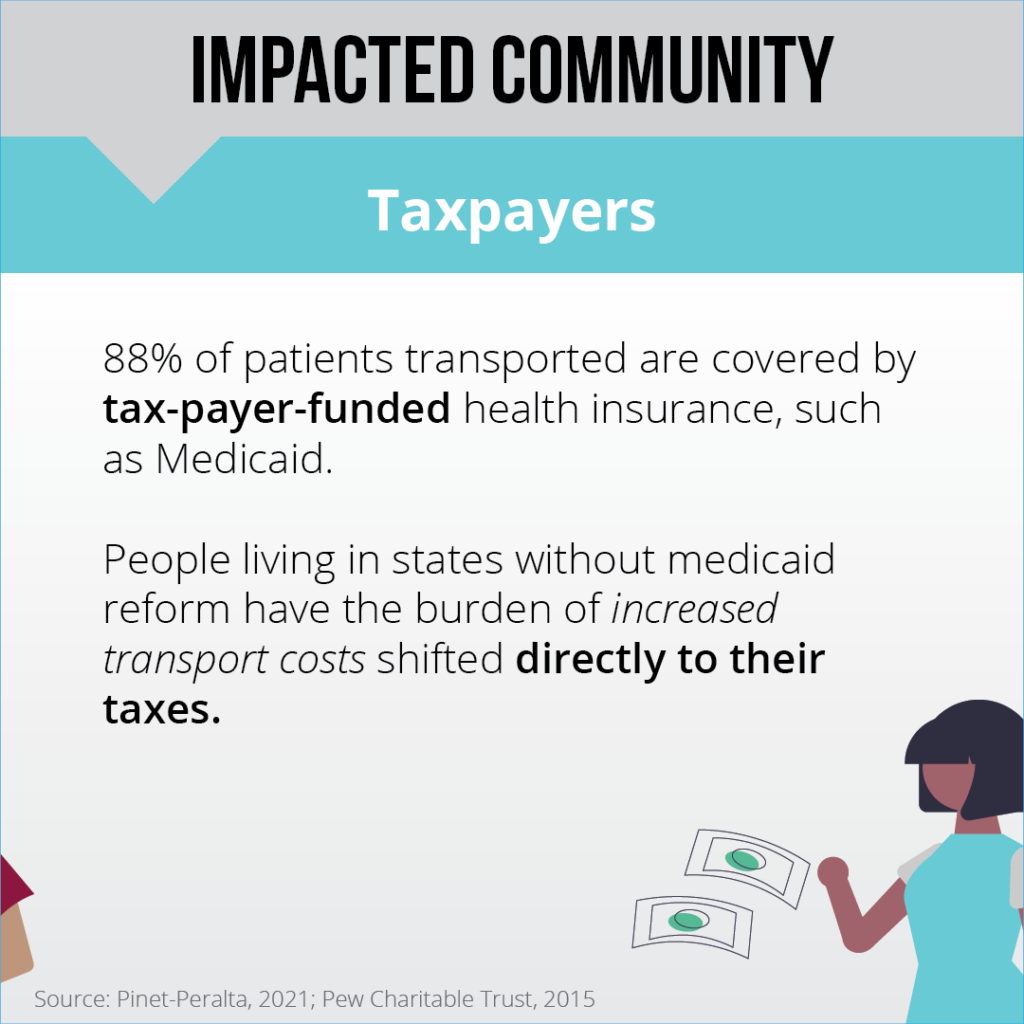
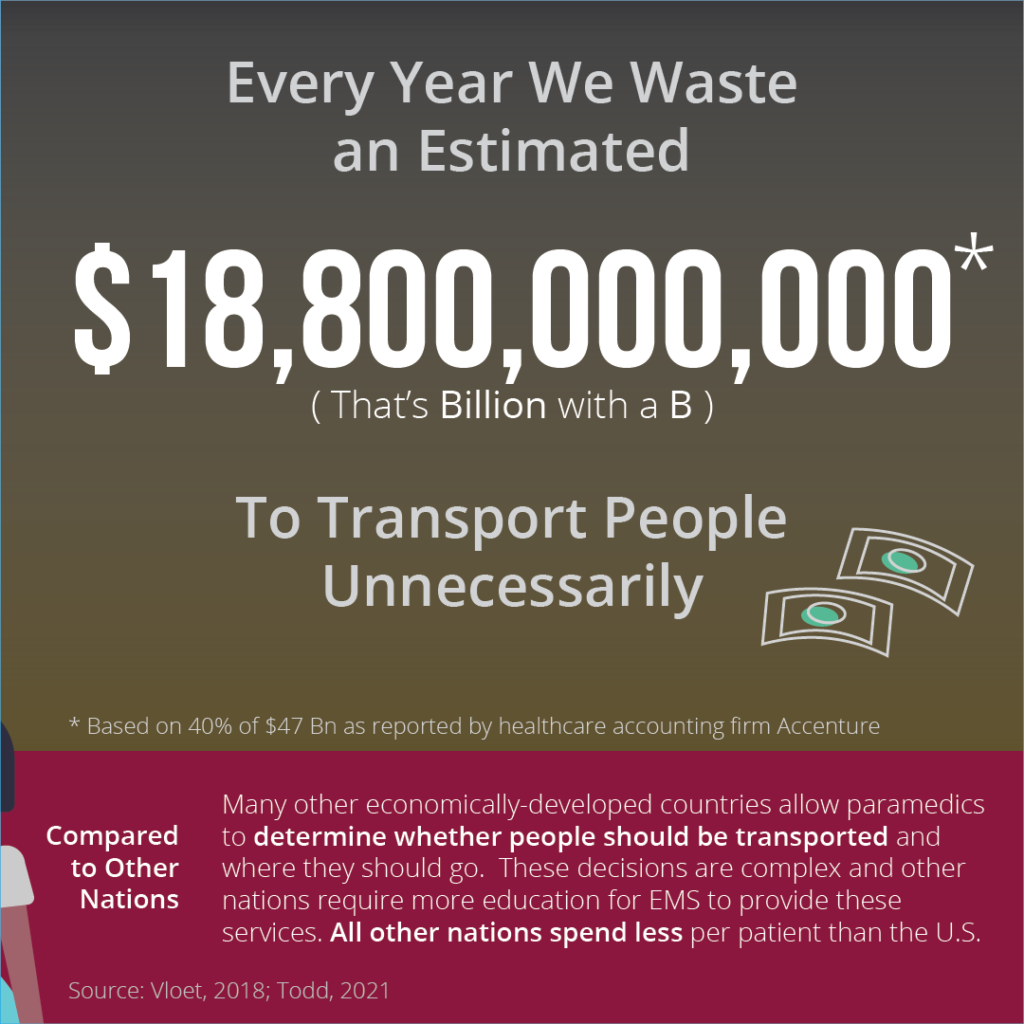
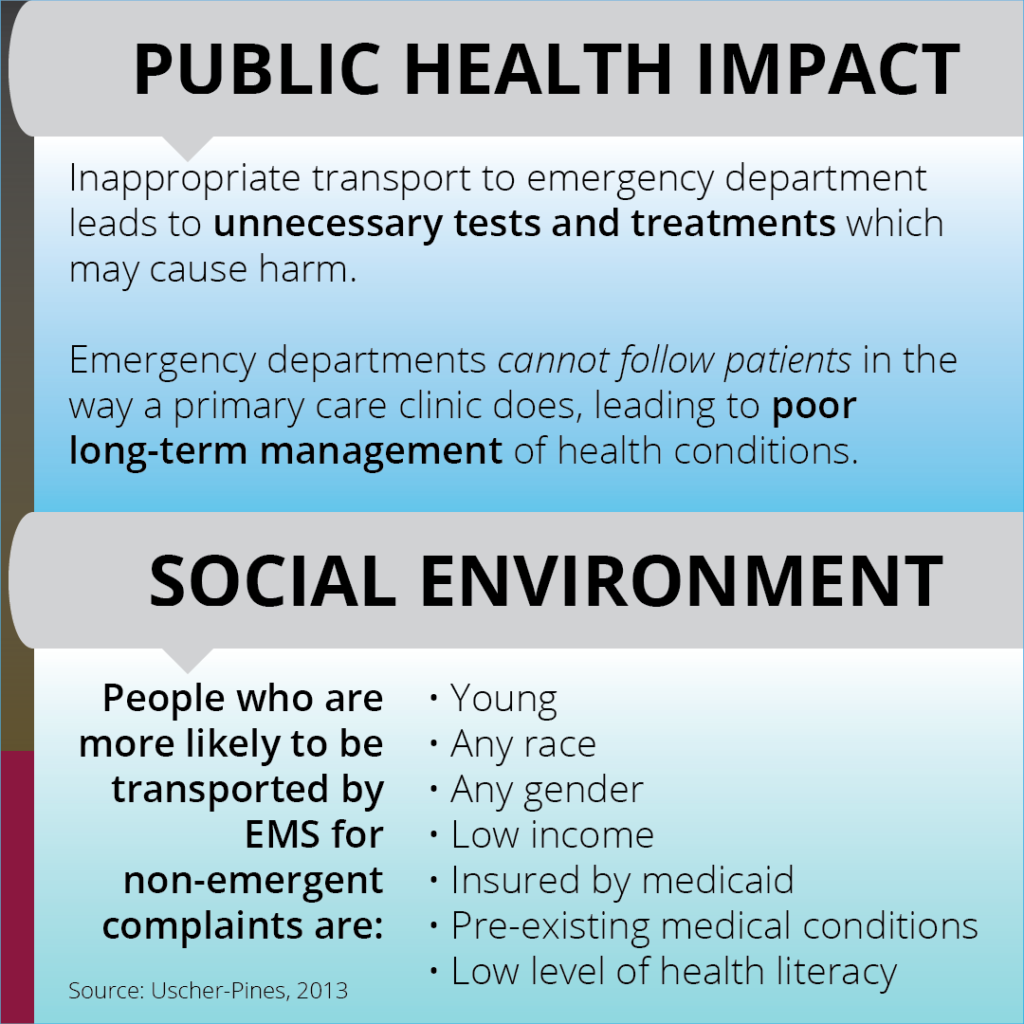
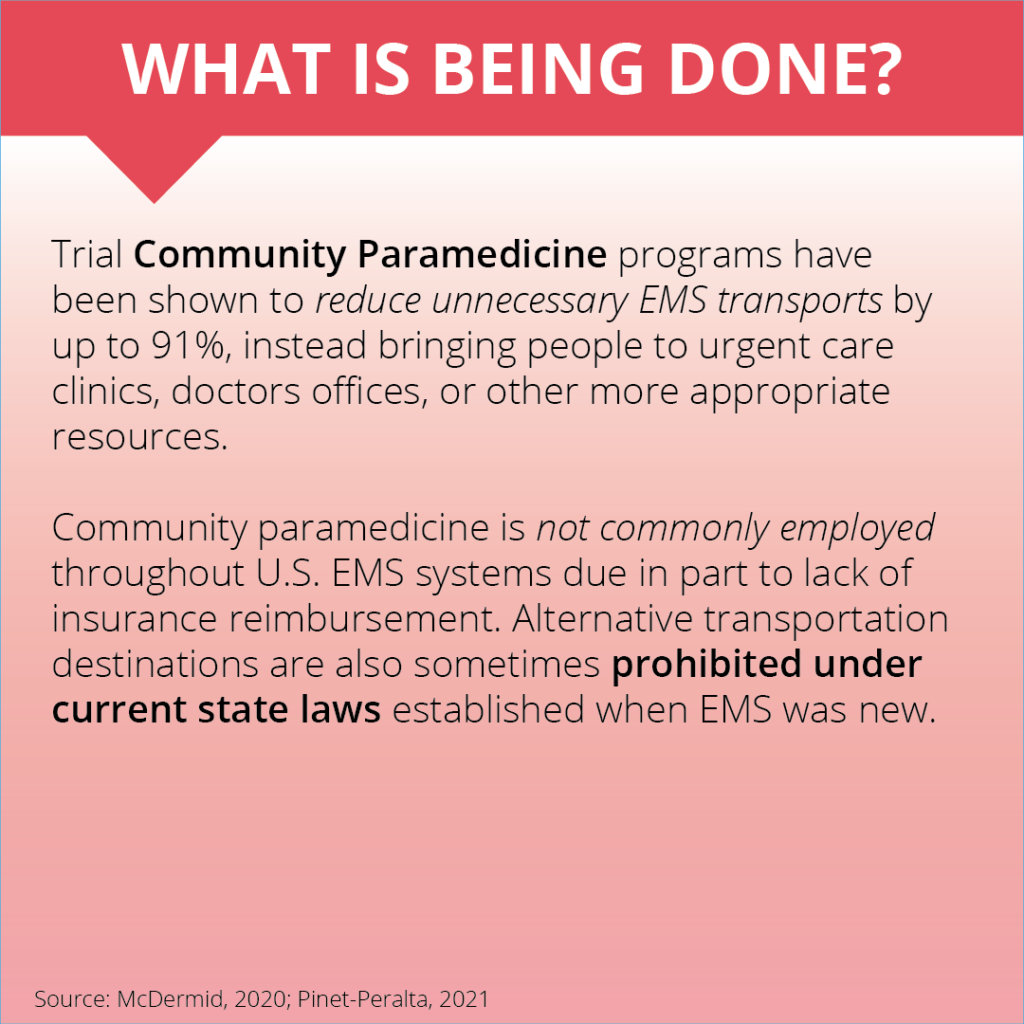
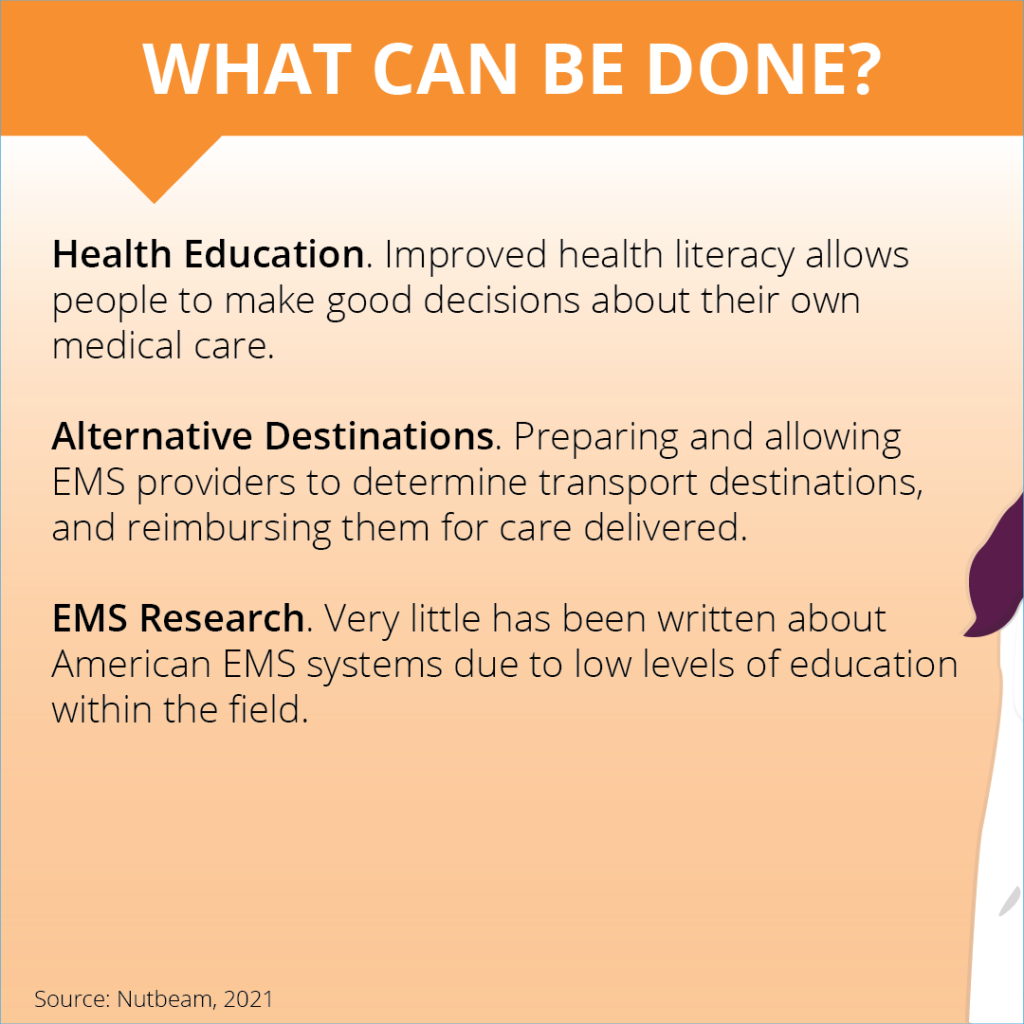
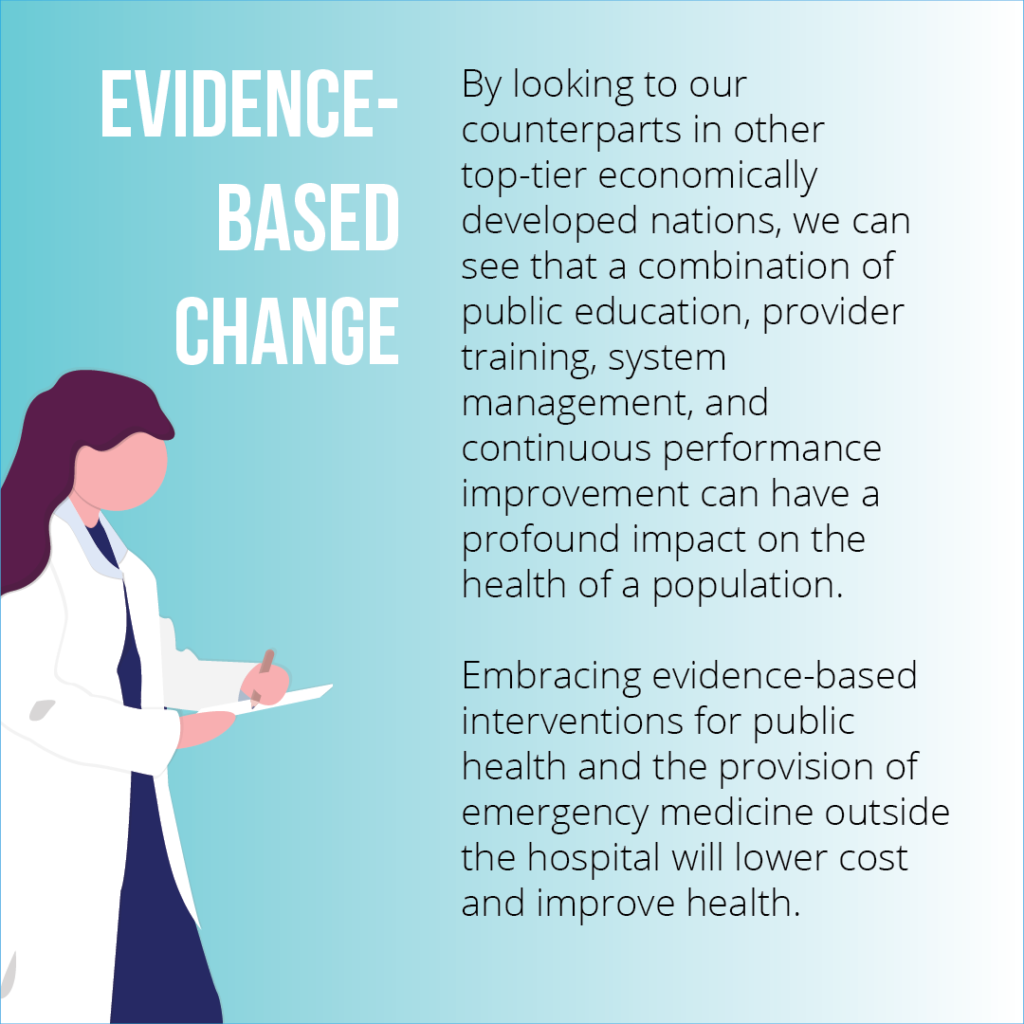
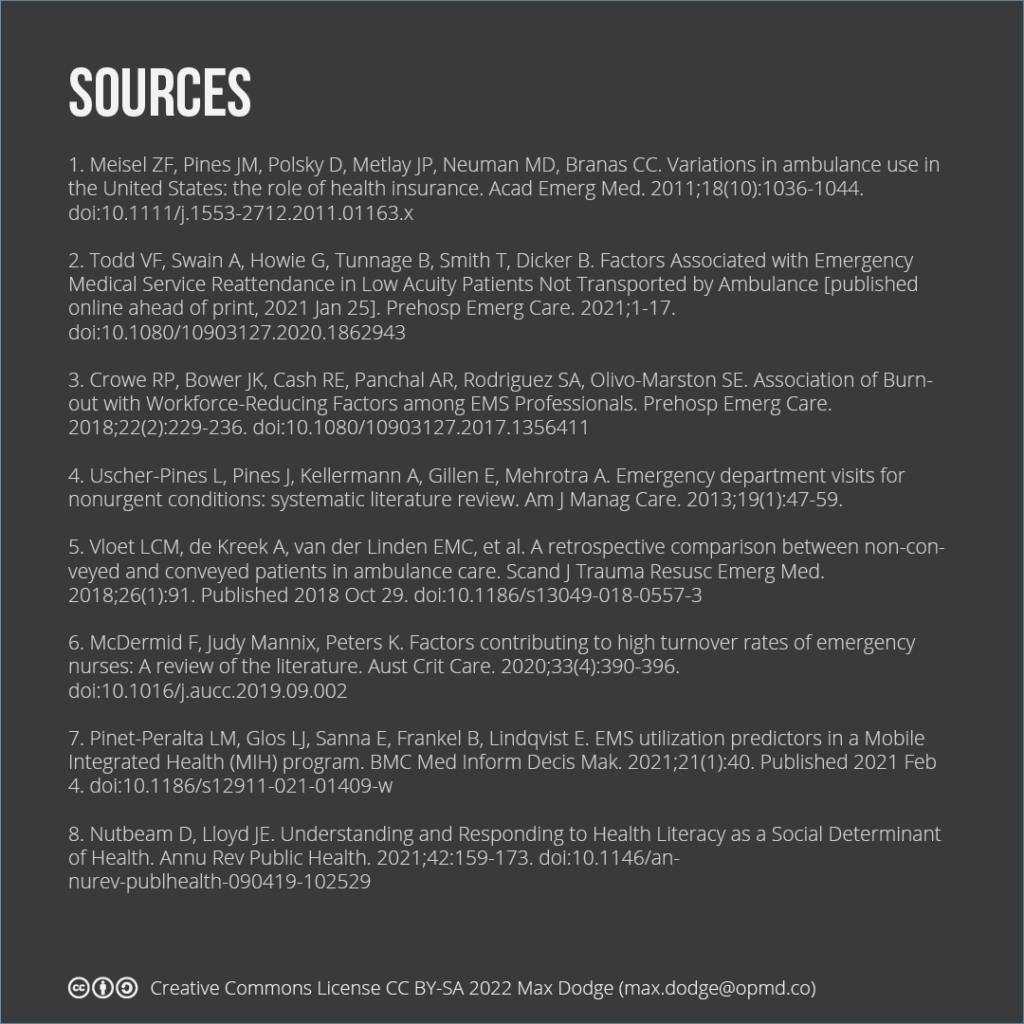
Sources
- Meisel ZF, Pines JM, Polsky D, Metlay JP, Neuman MD, Branas CC. Variations in ambulance use in the United States: the role of health insurance. Acad Emerg Med. 2011;18(10):1036-1044. doi:10.1111/j.1553-2712.2011.01163.x
- Todd VF, Swain A, Howie G, Tunnage B, Smith T, Dicker B. Factors Associated with Emergency Medical Service Reattendance in Low Acuity Patients Not Transported by Ambulance [published online ahead of print, 2021 Jan 25]. Prehosp Emerg Care. 2021;1-17. doi:10.1080/10903127.2020.1862943
- Crowe RP, Bower JK, Cash RE, Panchal AR, Rodriguez SA, Olivo-Marston SE. Association of Burnout with Workforce-Reducing Factors among EMS Professionals. Prehosp Emerg Care. 2018;22(2):229-236. doi:10.1080/10903127.2017.1356411
- Uscher-Pines L, Pines J, Kellermann A, Gillen E, Mehrotra A. Emergency department visits for nonurgent conditions: systematic literature review. Am J Manag Care. 2013;19(1):47-59.
- Vloet LCM, de Kreek A, van der Linden EMC, et al. A retrospective comparison between non-conveyed and conveyed patients in ambulance care. Scand J Trauma Resusc Emerg Med. 2018;26(1):91. Published 2018 Oct 29. doi:10.1186/s13049-018-0557-3
- McDermid F, Judy Mannix, Peters K. Factors contributing to high turnover rates of emergency nurses: A review of the literature. Aust Crit Care. 2020;33(4):390-396. doi:10.1016/j.aucc.2019.09.002
- Pinet-Peralta LM, Glos LJ, Sanna E, Frankel B, Lindqvist E. EMS utilization predictors in a Mobile Integrated Health (MIH) program. BMC Med Inform Decis Mak. 2021;21(1):40. Published 2021 Feb 4. doi:10.1186/s12911-021-01409-w
- Nutbeam D, Lloyd JE. Understanding and Responding to Health Literacy as a Social Determinant of Health. Annu Rev Public Health. 2021;42:159-173. doi:10.1146/annurev-publhealth-090419-102529

